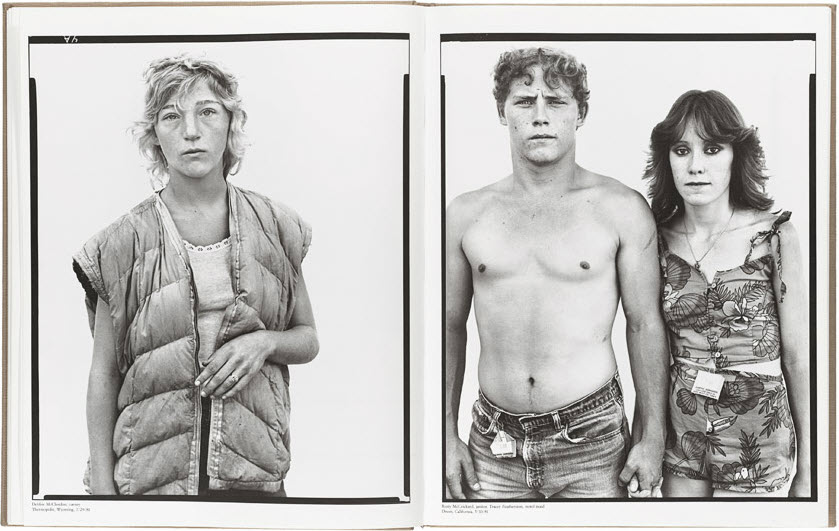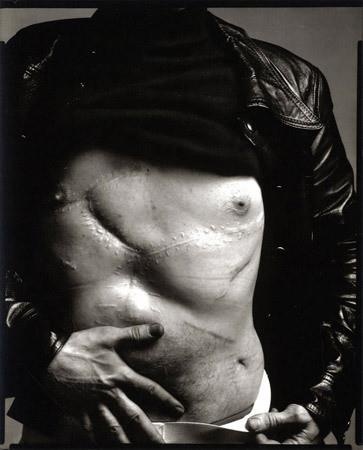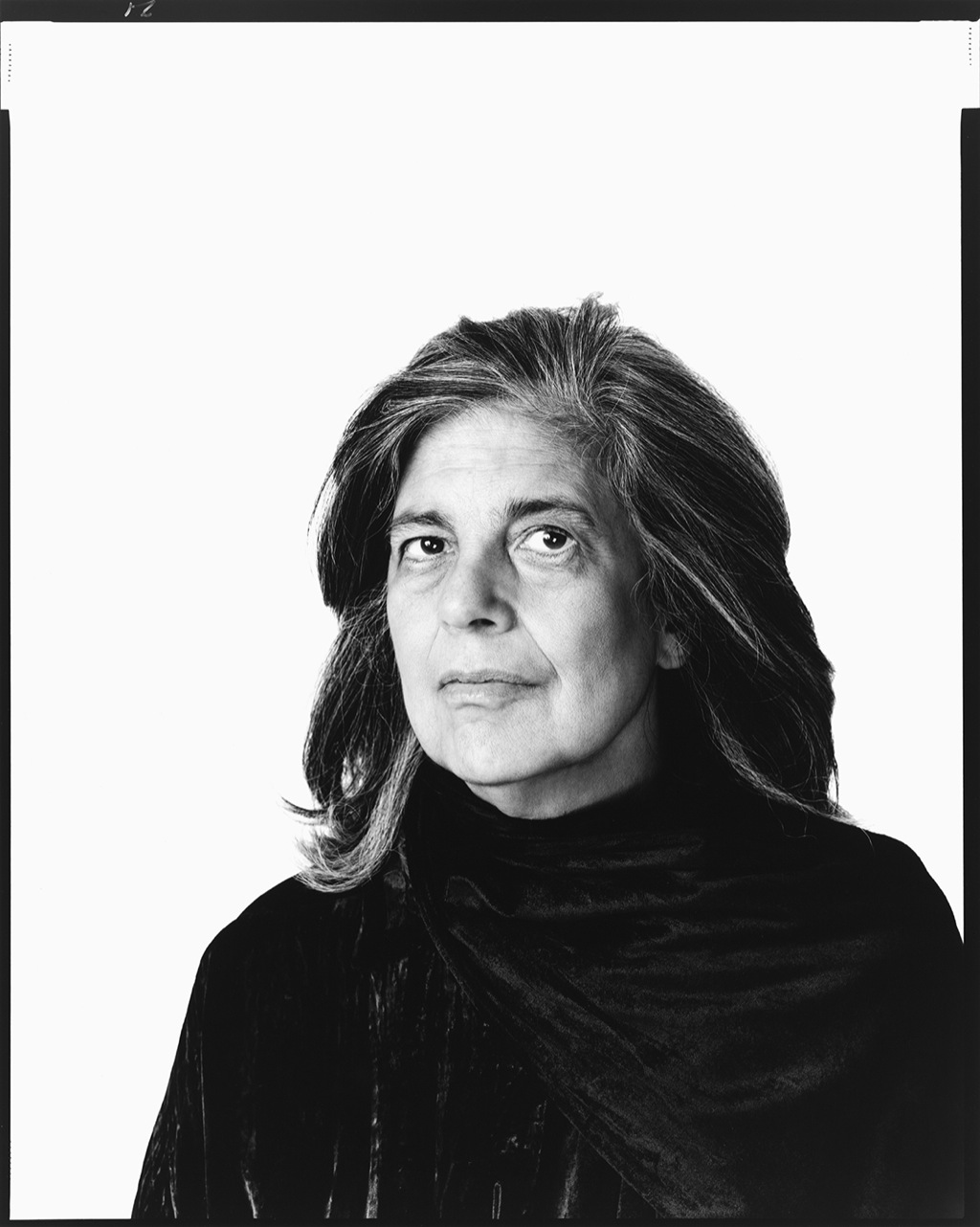








“Marilyn dio más a la cámara fotográfica que cualquier actriz, cualquier mujer que haya fotografiado, infinitamente más paciente, más exigente consigo misma y más cómoda frente a la cámara que lejos de ella.” – Richard Avedon
//
“Marilyn gave more to the still camera than any actress, any woman I’ve ever photographed; infinitely more patient, more demanding of herself and more comfortable in front of the camera than away from it.” – Richard Avedon




(Extracto de una entrevista a Richard Avedon)
— ¿Se encuentra ansioso por el futuro?
— No. Me gustaría tener más tiempo. Estoy entrando en mi acto final, y mi héroe es Matisse porque se reinventó completamente en la vejez. Ese es mi sueño.
//
(Excerpt of an interview to Richard Avedon)
— Are you anxious about the future?
— No. I would like to have more time. I am entering into my final act, and my hero is Matisse because he completely reinvented himself in old age. That is my dream.

“Todos actuamos. Es lo que hacemos continuamente, de una manera no intencional ni deliberada… Cuando posamos para un fotógrafo, lo hacemos detrás de una sonrisa que no es tuya. Pero tienes rabia y hambre y estás vivo… Lo que yo valoro es esa intensidad. Quiero hacer retratos tan intensos como las personas.”
— Richard Avedon
//
“We all act. It’s what we all do, in an unintentional or deliberate way… When we pose for a photographer, we do it behind a smile that is not yours. But you are angry and hungry and alive… What I appreciate is that intensity. I want to make portraits as intense as people.”
— Richard Avedon

“Cuando la sesión de posado ha terminado, siento un poco de vergüenza por lo que hemos compartido. Es tan intenso. Las instantáneas que he realizado trabajando muestran algo de lo que no era consciente para nada, una y otra vez estoy sosteniendo mi propio cuerpo o mis propias manos exactamente igual que la persona que estoy fotografiando. Nunca supe que lo hice, y, obviamente, lo que estoy haciendo es tratar de sentir, sentir físicamente, la forma en que él o ella se siente en el momento, y les estoy fotografiando con el fin de profundizar el sentido de conexión.” – Richard Avedon
//
“When the sitting is over, I feel kind of embarrassed about what we’ve shared. It’s so intense. Snapshots that have been taken of me working show something I was not aware of at all, that over and over again I’m holding my own body or my own hands exactly like the person I’m photographing. I never knew I did that, and obviously what I’m doing is trying to feel, actually physically feel, the way he or she feels at the moment and I’m photographing them in order to deepen the sense of connection.” – Richard Avedon

“Odio las cámaras. Interfieren, están siempre en medio. Ojalá: tan sólo pudiera trabajar solo con mis ojos. Obtener una impresión satisfactoria, una que contenga todo lo que uno pretende, es muy a menudo más difícil y peligroso que la sesión de posado en sí misma. Cuando estoy fotografiando, sé inmediatamente cuando tengo la imagen que realmente quiero. Pero conseguir la imagen de la cámara y en directo, es otro asunto.”
— Richard Avedon
//
“I hate cameras. They interfere, they’re always in the way. I wish: if I could just work with my eyes alone. To get a satisfactory print, one that contains all that you intended, is very often more difficult and dangerous than the sitting itself. When I’m photographing, I immediately know when I’ve got the image I really want. But to get the image out of the camera and into the open, is another matter.”
— Richard Avedon

En el año 1979 Avedon comenzó uno de sus trabajos más importantes, “In the american west”, por encargo del Museo Amon Carter. En este proyecto, al que dedicó más de 5 años recorriendo el Oeste de los Estados Unidos y compuesto por 123 fotografías, Avedon retrató granjeros, prostitutas, presos, vagabundos y un sinfín de personajes con su cámara de gran formato y, por supuesto, su particular y conocido fondo blanco, mostrando unos retratos con una fuerza expresiva que ningún otro fotógrafo había conseguido hasta el momento.
//
In 1979 Avedon began one of his most important works, “In the American west”, commissioned by the Amon Carter Museum. In this project, which spent more than 5 years touring the Western United States and consists of 123 photographs, Avedon portrayed farmers, prostitutes, prisoners, homeless and a host of characters with their large format camera and, of course, his particular and known white background, showing portraits with an expressive force that no other photographer had gotten so far.





(via: http://www.inmagazine.es/)

Aquí Andy Warhol muestra las cicatrices de cuando le dispararon en 1968; seis órganos fueron perforados por las balas. La tela empujada hacia abajo alrededor de la cintura es un corsé quirúrgico, que tuvo que llevar el resto de su vida. La mujer que le disparó sólo cumplió tres años.
//
Here Andy Warhol shows off the scars from when he was shot in 1968; six organs were pierced by bullets. The fabric pushed down around his waist is a surgical corset, which he had to wear the rest of his life. The woman who shot him only served three years.



“Hoy todo existe para culminar en una fotografía.” – Susan Sontag
//
“Today everything exists to end in a photograph.” – Susan Sontag
(via: http://odaaniepce.wordpress.com/2013/11/05/la-frase-fotografica-de-los-martes-por-susan-sontag/)

“Un retrato fotográfico es una foto de alguien que sabe que está siendo fotografiado, y lo que hace con este conocimiento es una parte tan importante de la fotografía como lo que lleva puesto o cómo se ve.” – Richard Avedon
//
“A photographic portrait is a picture of someone who knows he is being photographed, and what he does with this knowledge is as much a part of the photograph as what he’s wearing or how he looks.” – Richard Avedon